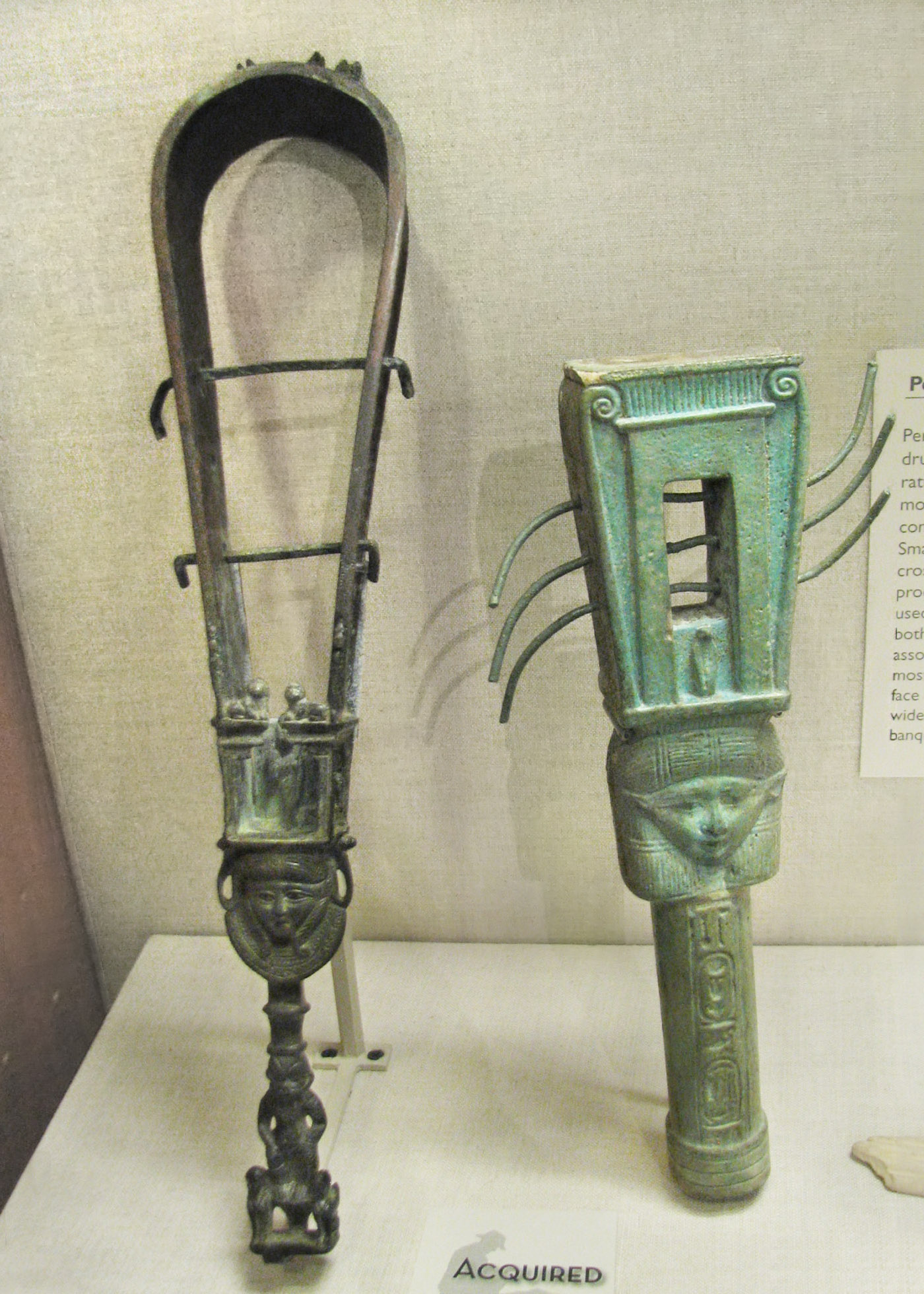
H: 37.5cm, W: 8 cm, Th: 5 cm
Right: Faience naos-type sistrum,
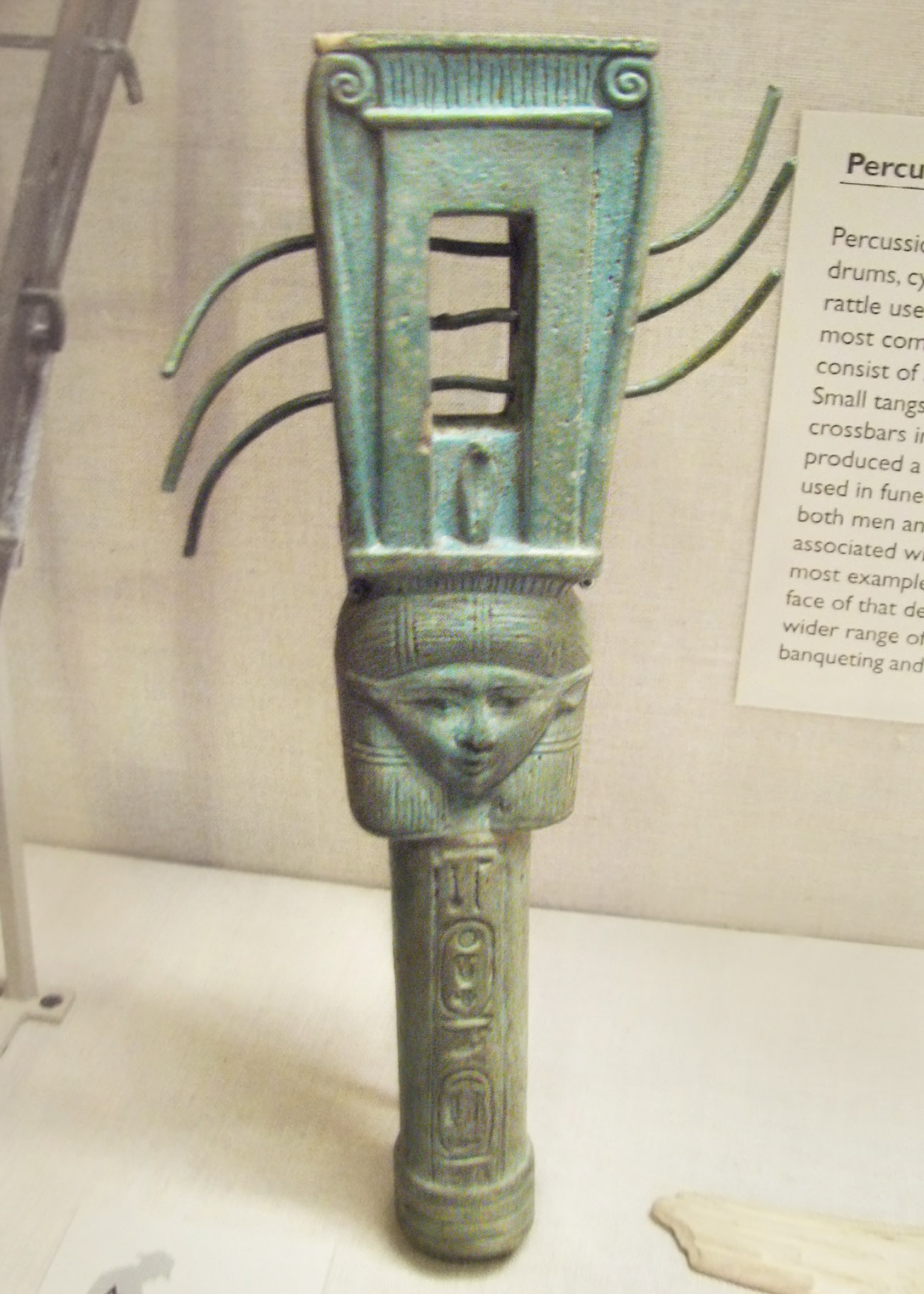
Late Period, Dynasty 26, reign of Amasis, 570-526 BCE
OIM 10718, OIM 14058
Both photos ©Joan Ann Lansberry, 2010
|
From "The Life of Meresamun: A Temple Singer in Ancient Egypt": "This example features a head of Hathor. Above the goddess is a tiny temple portal whose architraves are ornamented with recumbent lions. Crowned cobras rear up behind the lions." Among the details are "a cat nursing two kittens" "on top of the sistrum" and "the handle is in the form of the god Bes". |
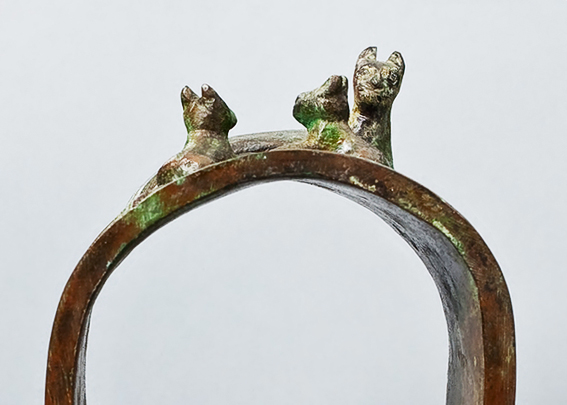 Detail of museum website photo showing the cat with her two kittens... 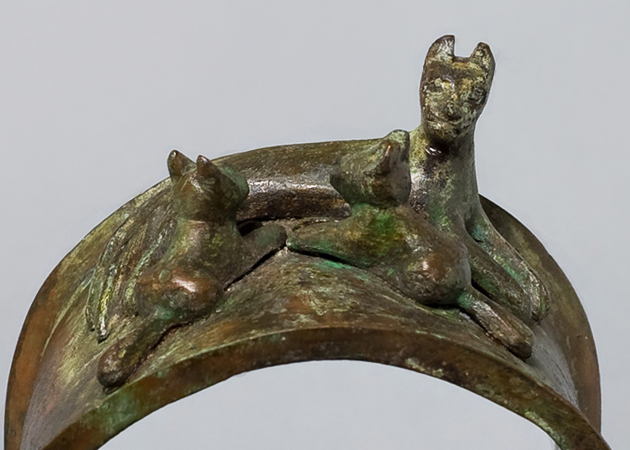 Another detail from a museum website photo 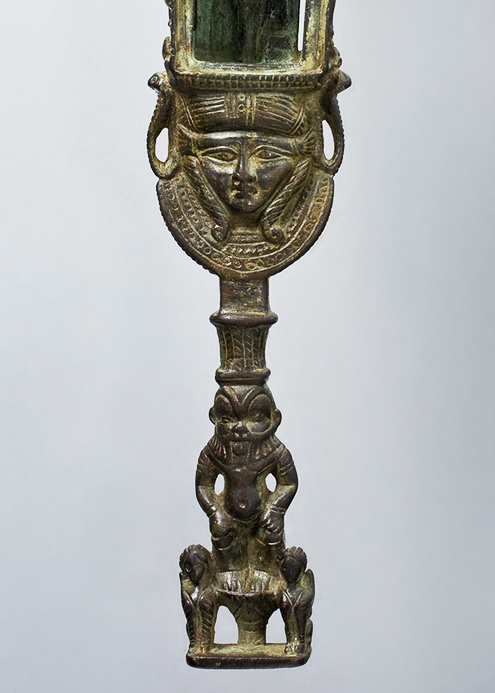
|
|
From the info card: "The rectangular top of the sistrum on the right imitates the form of a shrine of the goddess Hathor whose face, framed by a heavy wig, appears below the shrine. Since this sistrum is made of fragile faience, it is probably a model, or votive rattle used in offering ceremonies rather than an actual musical instrument. The handle is inscribed with the names of the king."
A 'snippet' quote via Google book looks: "Based on this proven effect of the instrument, the sistrum was, from the New Kingdom on, the instrument that pacified
and satisfied any deity, whether female such as Hathor, or male. In the temple of Amun-Re at Karnak, a naos-shaped ..."
|
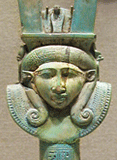 Sistrum |
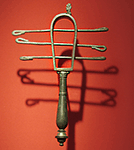 Bronze Sistrum |
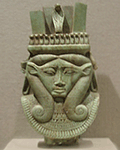 Two Sistra |


